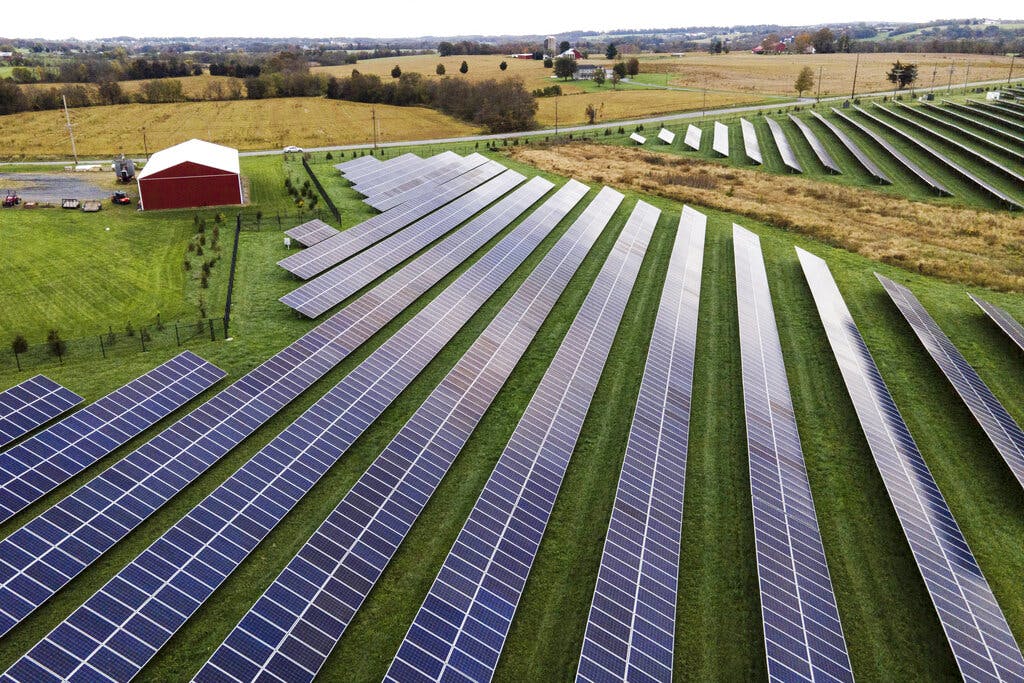The Real Roadblock to Biden’s Climate Agenda
The major obstacle to the president’s climate goals was never money, or even Senator Manchin — it’s red tape over clean energy infrastructure.

President Biden promised to eliminate carbon emissions in the electricity sector by 2035. Doing that would have required sweeping action by federal agencies and Congress. But the country hasn’t gotten either, and now a combination of constitutional law and political reality has slammed the door shut on both.
On the regulatory side, the Supreme Court made clear in West Virginia v. EPA that federal agencies can’t go scouring statutes for secret super-powers that Congress never intended to grant them. That shuts the door to decarbonization through regulation.
In Congress, meanwhile, Senator Manchin closed the door to cap-and-trade, carbon tax, and any renewable electricity standard. “Mr. Manchin appeared to have single-handedly shattered Mr. Biden’s ambitious climate agenda,” wailed the New York Times.
That agenda has certainly been shattered, and the hundreds of billions allocated for clean energy in the Manchin-Schumer climate-and-tax package won’t change that. That’s because the major obstacle to Mr. Biden’s climate goals was never money.
Certainly, those goals would have required the construction of clean energy infrastructure on a stupefying scale — scores of new nuclear power plants, enough utility-scale solar farms to cover half of Florida, tens of thousands of wind turbines, thousands of miles of transmission lines.
There was plenty of money for those projects—if they could get their permits. But they can’t.
The system of federal permits for infrastructure projects is so convoluted and dysfunctional that clean energy developers would be lucky to get a fifth of the permits they need to build all of that by 2035. Until then the clean energy agenda can produce only one thing: more expensive energy.
Speaking at the gritty site of a torn-down coal plant a few weeks ago, Mr. Biden touched on the real problem: “Let’s clear the way for clean energy and connect these projects to the grid. I’ve directed my administration to clear every federal hurdle and streamline federal permitting.”
The trouble is that most of the streamlining reforms that could be done by executive action were already done in the Obama and Trump administrations, and Mr. Biden has actually been rolling them back.
Mr. Biden also announced a series of “emergency measures” that included an increase in funding for FEMA resilience programs, some guidance on air conditioners in underserved communities, and the opening of part of the Gulf of Mexico for wind farms.
The first would do nothing about carbon emissions, the second would increase them, and the third would at most power a small city, a drop in the bucket compared to what would have been required to meet Mr. Biden’s original goals.
Only Congress could streamline the federal permitting process enough to allow for deployment of clean energy infrastructure at the scale and speed necessary to meet Mr. Biden’s goals. Yet in the various climate and infrastructure bills of the Biden era, Congress barely even tried.
Senator Schumer committed to passing some sort of permitting reform as part of the climate-and-tax deal, but early drafts are a potpourri of too little, too late. The drafts include ineffective time limits on permit decisions and court challenges, and an expansion in state authority to block transmission and pipeline projects that would make the entire problem worse.
These various eleventh-hour proposals are like the odds and ends one might salvage from wreckage after a flood. Environmental advocacy groups have rightly slammed them as inadequate. But they have only themselves to blame.
They helped to create the system of suffocating red tape that is now depriving Americans of both abundant energy and clean energy. They are among its few beneficiaries. And now they can’t wean themselves off of it even to “save the planet.”
Climate change is real enough, but as with other environmental hazards, the way to deal with it is through mitigation measures that pass a rational cost-benefit analysis and targets the most at-risk communities.
That means investing in adaptation, resilience, and the energy abundance that makes environmental protection possible.

